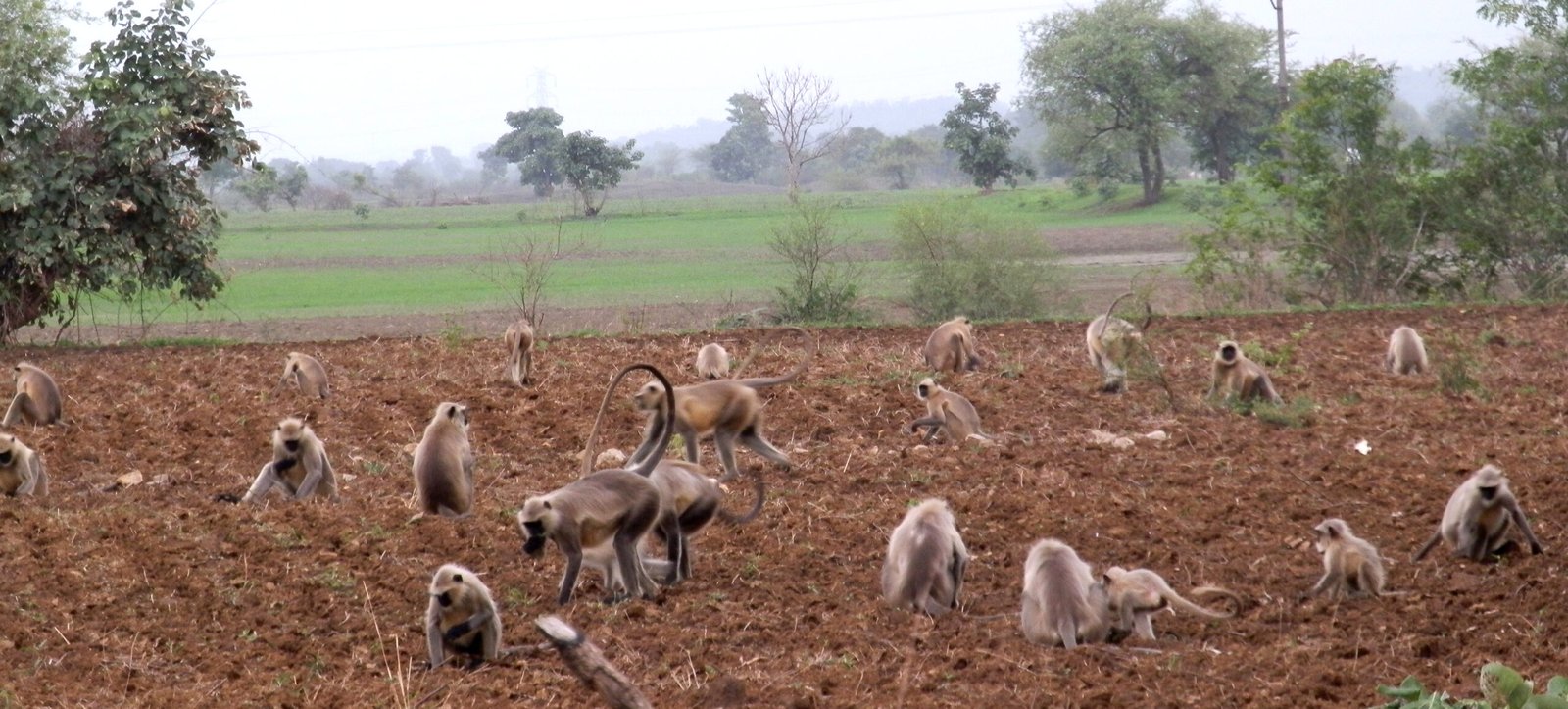First of all, let me apologize for the poor-quality picture. It was getting dark and was also a bit risky to get out of the car. Poor farmer, my heart goes out to the farming community in India.
This farmer must have planned the crop way ahead of time, getting the best soybean seeds he could afford, clearing the field of all the weeds, tilling, sowing, timing the plantation just right with the arrival of the monsoon; working under hot sun and rain, walking between snakes and scorpions.
As if that wasn’t challenging enough, these monkeys in the picture are feasting at the farmers’ expense. Quite symbolic actually of a society where a huge burden of the economy is loaded on the farmers.
Farming is open to adverse effects from all elements – natural and market; animals, birds and even humans. Ironically, however, the market available to these farmers may not necessarily be “open”.
Let’s start with the agriculture marketing laws in India.
Most of the States in India prohibit sale of farm produce outside the government-mandated marketplace (Mandi). Generally, poor farmers are uneducated and have limited means to be aware of price trends and have to accept the price offered to them at auctions on the day that they bring their crop to the mandi. Traders are thus well positioned to exploit both farmers and buyers through practices that sustain system-wide inefficiencies.
How to make sure then that the farmer gets a good price, and high commissions are not charged by the intermediaries. Reform the APMC (Agricultural Produce Market Committees) Act?
Seriously, why so many regulations? Why can’t a farmer sell in a free and open market?
For the benefit of farmers, the government fixes Minimum Support Prices ( MSP) for major agriculture commodities based on Commission for Agriculture Cost and Prices (CACP) recommendations. I understand the reluctance in increasing these MSPs as it may increase inflation and affect other poor sections of the society. However, how fair is it to put the burden of supporting one poor of the society on the other?
Besides, there may be times when farmers may not even get the minimum support price (distress sale) for lack of proper storage facility. A Rural Godown Scheme (RGS) was introduced by the Govt. to solve the problem. I do not have enough information to claim if the scheme has been successful or otherwise.
There could be other factors, but I’d rather refrain from getting any more political than I already have. Please understand that this post is based on my opinion and readings, and I am not an expert on the agriculture industry. You should make your own judgement based on your personal findings and remember sometimes a blog is just a blog. 🙂
